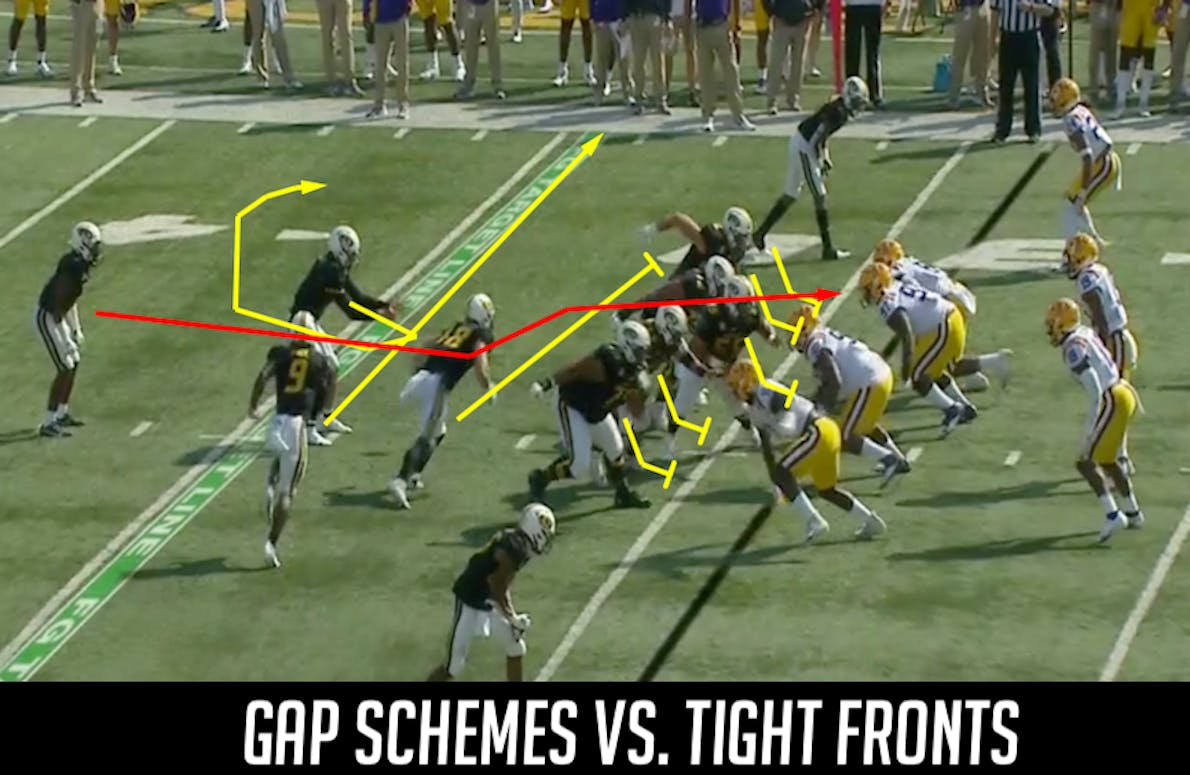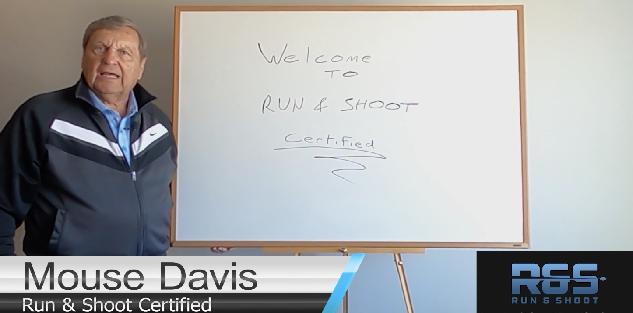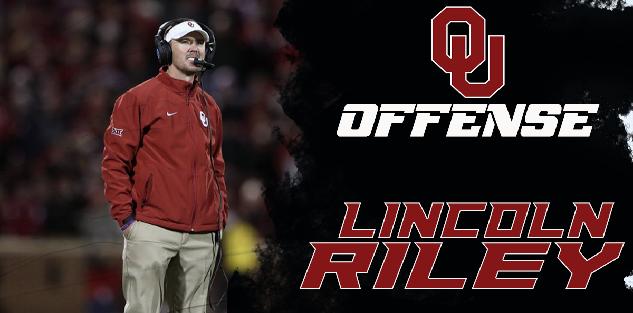Featured courses
- Jim Thorpe Award Winner Jahdae Barron’s 4 Drills for Dominating Receivers by Grant Young
- 5 Tips to Improve Your Football Game Plan by Andrew Dohre
- Game Changer RPO Football : Wing-T Offense by Andrew Dohre
- Mastering the Pass Rush: Expert Drills and Progression Tips from UCLA’s Coach Ikaika Malloe by Andrew Dohre
- 3 SPO’s to Protect the Passing Game and create opportunities in space by Keith Grabowski
- The Art of Running the Corner Route- Coaches and Players Prespectives by CoachTube Staff
- Evolve your Defense with Quarter, Quarter Half to Stop RPO by Coach Grabowski
- Top 10 College Football Players to Watch for in 2022 by Alec Burris
- Clemson vs. Syracuse Matchup of the Week by Keith Grabowski
- Sprint Out Passing: Move the Pocket for Success by Keith Grabowski
- Unlocking the True Potential of Your Special Teams Play by Keith Grabowski
- The Most Important Components of Air Raid by Keith Grabowski
- 4 Plays that Benefit from Bunch Formations by Keith Grabowski
- 3 Third Level RPOs for Explosive Plays by Keith Grabowski
- The Role of the Screen Game in Explosive Offense by Keith Grabowski
- The Chess Match: Win on the Perimeter (Part 1) by Coach Grabowski
- Unlocking the Power of Gap Manipulation to Limit Explosive Plays by Keith Grabowski
- TCU’s 3-3-5 and facing bigger personnel by Keith Grabowski
- Elevating Your Team: Strategies from Coach Matt Ruhle by Keith Grabowski
- 7 RPO’s for your playbook by Coach Keith
- Beyond Quarters - The Need For Additional Coverage Concepts by Keith Grabowski
- 5 Core Offensive Priniciples for a Winning Football Formula by Keith Grabowski
- Win Downfield - Attacking Different Areas Deep with 3rd Level RPO by Coach Grabowski
- WAKE FOREST’S UNIQUE RPO GAME by Keith Grabowski
- Adjustments to Defeat the Tite Front by Keith Grabowski
- Attack Defenses with The Versatile Y-Cross Concept by Keith Grabowski
- Play Action is a Cheat Code! - 5 Play Action Concepts to Increase Your Expected Points by Keith Grabowski
- Question from Rutgers OC - What does your offense say about your coaching? by Keith Grabowski
- Gap Schemes vs. Tight Fronts, Play Action Shots and Misdirection by Coach Grabowski
- Setting up your young Qb for success by Keith Grabowski
- The Hot Gap plus 3 Gap Scheme RPO’s to Stress the Defense by Keith Grabowski
- How Football Coaches Can Build A Game-Changing Special Teams Unit by Grant Young
- Master the Art of Quick Passing for High Completion Percentages by Keith Grabowski
- How to Be an Influential Football Coach by Grant Young
- How to Maximize Tackling Efficiency within Scheme by Keith Grabowski
- Offensive Drills of the Week by Keith Grabowski
- How a Stoplight Can Make Your Fly Sweep Takeoff by Keith Grabowski
- Keep your Drills Fresh and Your Skills Developing - Offense by Keith Grabowski
- Coach Kevin Kelley, Outside The Box by Keith Grabowski
- Want your defense to get off the field after third down? Sims and Creepers are the answer! by Keith Grabowski
- Create More Turnovers with Circuit Training & Win More Games! by Keith Grabowski
- Devastate the Defense with TE RPOs by Keith Grabowski
- Red Zone adjustments by Keith Grabowski
- CoachesClinic.com Featured Matchup: Cincinnati vs Indiana by Caleb Hopkins
- 3 NFL ZONE RUN PLAYS FROM WEEK 7 by Alex Kirby
- Sonny Dykes Teaches You How to Put Together an Offense by Coach Grabowski
- FIVE REASONS TO RUN THE 3-3 DEFENSE by Alex Kirby
- Getting Your Defense Ahead - 1st and 2nd down Pressures from Noah Joseph by John Grayson
- Chad Morris Teaches How To Builds an Offense by Coach Grabowski
- Get Your Offense a +1 With the QB Run Game by Coach Grabowski
- Are You Causing a 14 Point Turnaround...Against Your Team? by Coach Grabowski
- Learn How to Improve Your Offense with USC’s “Harrell Effect” by Coach Grabowski
- The Power of Influence - Rick Jones, Mizzou by Coach Grabowski
- Easy QB Runs to Drive Defenses Crazy by Ryan Eisenberger
- How many different ways can you make the defense cover everyone? by Ryan Eigenberger
- Win Passing Downs with Creepers and Sims by Coach Grabowski
- Always have a plan to play your best 11 by Keith Grabowski
- Dominate the Defense with Double Teams by Coach Grabowski
- Buffalo OC teaches his model for game planning by Keith Grabowski
- Put your 3 Deep Coverage in a Better Position with Zone Alert Rotations by Coach Grabowski
- 5 Keys to Using Trick Plays by Coach Grabowski
- Learn from 'Juggernaut' Offense by Keith Grabowski
- Bob Wylie - Offensive Line Breakdowns by Coach Grabowski
- Utilizing the Hybrid Linebacker to take away Offensive Advantages by Coach Grabowski
- Always have a plan to play your best 11 by Keith Grabowski
- Coachesclinic.com Featured Matchup: #6 Oklahoma vs #21 Texas by Caleb Hopkins
- Easy for You - Difficult for Them Adjustments by Keith Grabowski
- Coachesclinic.com Featured Matchup: Davidson College vs Presbyterian by Caleb Hopkins
- Week 5 National High School Football Rankings by Keith Grabowski
- Protecting Aaron Rodgers (and your own QB) by Caleb Hopkins
- Defensive Drills of the Week by Keith Grabowski
- Woo Pig - Add a wrinkle with these Arkansas Downhill Run Variations by Keith Grabowski
- Coachesclinic.com Featured Matchup: #7 Cincinnati vs #9 Notre Dame by Caleb Hopkins
- Offensive Drills of the Week by Keith Grabowski
- Coach Jason McEndoo Teaches #12 Oklahoma State’s Top Running Play by Keith Grabowski
- Adjustments - Attach Screens to your best plays, defend star receivers, & movement to stop the run by Keith Grabowski
- Coachesclinic.com Featured Matchup: Army vs #16 Wake Forest by Caleb Hopkins
- How To Implement A Running-Back-By-Committee Scheme by Brandon Ogle
- How To Become The Most Feared Offensive Lineman In Your League by Chrisian Benavides
- Wylie, McNally and Alexander Key Coaching Points on the Wide Zone Play by Keith Grabowski
- #21 Coastal Carolina’s play that is a whole offense within itself by Keith Grabowski
- 4 Plays that Benefit from Bunch Formations by Keith Grabowski
- Best Mesh Concept Plays by Ron McKie
- Forming Families For Football by Darryl Page
- Top 5 Things Coaches Should Strive To Get Out Of Spring Camp by Darryl Page
- 10 Tips To Know Before Attending Football Camps by James Breland
- Offensive Line Drills by Rick Bouch
- You’re a captain, now what? 5 Tips to bring your team together and establish yourself as a true leader by Lester Crafton
- COACHING THE 4-2-5 DEFENSE VS SPREAD TEAMS by Alex Kirby
- Gifts From Grinch by Coach Grabowski
- A Package to Help You Win Mid to Late Season by Coach Grabowski
- The Future of American Football: How to Run the Spread Offense by Coach Scott
- Chris Ash teaches Longhorn Tackling by Coach Grabowski
- The misunderstood Yet Powerful Run Scheme - Duo by Coach Keith
- THE GUS MALZAHN QUARTERBACK COUNTER PLAY by Alex Kirby
- FIVE TIPS FROM GUS MALZAHN ON HOW TO BUILD YOUR PLAYBOOK by Alex Kirby
- LITTLEST KID ON THE FIELD TRUCKS LINEMAN – YOU CAN’T MAKE THIS STUFF UP by Jacob
- HOW TO MAXIMIZE YOUR OFFSEASON FOOTBALL TRAINING by Dominic
- BAD CALL, GREAT COACH: THIS IS WHY PLAYERS LOVE PETE CARROLL by Jacob
- How to Get Recruited for Collegiate Sports by Brandon Ogle

Gap Schemes vs. Tight Fronts, Play Action Shots and Misdirection
This past weekend really ramped up in college football as the country moves towards having all the major conferences back on the field. It’s great to see the SEC back in full swing. A few concepts are trending already, and those are applicable at every level.
Defensively, the Tight front can be seen in almost every game and has proven to be successful against inside zone teams. Ole Miss and DJ Durkin leaned on it to try to stop Alabama’s high powered offense. Notably many of the big plays were a gap scheme (power, counter, and pin and pull) with linemen blocking down on those 4i’s that give zone concepts trouble. Several of Bama’s big runs were gap scheme variations with a kick out and a wrap through. There’s definitely a lesson to be learned there in how to defeat the Tight front.
Misdirection created by sweep motion is another big trend in 2020. Having a sweeper running with speed at the snap of the ball to threaten the flanks slows both the squeeze of edge defenders as well as the safeties getting down inside quickly to the run fit.
Play Action Passes created some of the biggest plays across both college football and the NFL. In an era dominated by RPO concepts, the play action pass is making a huge comeback. The RPO is nice to attack with a quicker hitting pass off a defender, but the play action done right can severely stress the secondary and open up the field for huge chunks of yardage.
The thing I love about Coach Tube is the depth of the resources available to be able to make adjustments to your offense or defense even in-season.
As mentioned, the Tight front has really been helping defenses shutdown the run while allowing for defenders to take away the pass because it’s designed to spill runners to your athletes outside. It allows for less in the box which can help keep second level defenders out of conflict.
Add Odd Fronts to Your Even Scheme
Most odd front teams have it, but you can do things right now to make some of these front adjustments to your even front scheme. Jeff Dittman, DC at RPI, made that change in season last year and it paid dividends. He explains it in this course. Three Down Change Ups to Your Four Down Front
Tight Front to Defend Gap Schemes
Baylor Head Coach Dave Aranda, wasn’t shy about using the tight front when he was at LSU and was well aware that gaps schemes could be used as mentioned to give his defense a problem. One of the games brightest defensive minds, he has the answers and he shared those in his course Defending the Spread Offense. He covers his adjustments to stopping the pin and pull (buck sweep) and counter.
Gap Schemes
Gap schemes, especially Counter, allow an offense to attack multiple fronts and that’s what Reedley College head coach/offensive coordinator Eric Marty does in his offense. Using his TE as the second puller, Marty covers the details of the play vs. every front in this course.
Pin and Pull, or Buck Sweep as many coaches refer to it is another way to attack multiple fronts including the Tight Front. Central Michigan Offensive Line Coach Mike Cummings loves the pin and pull. He explains the two basic rules of the down blocker (pin blocks) and the pullers, shares drills as well as illustrates with game film.
Play Action to Get Big Gains
Big chunks of yardage and touchdowns are the benefits of a good Play Action Passing Game. Head Coach/Offensive Coordinator at DePauw University Brett Deitz has a high powered offense which utilizes play action as a way to get the ball down field and beat specific coverages. He includes ideas on how they beat those coverages as well as what he likes in certain areas of the field like the Red Zone. He covers the details in his course Maximizing Play Action in a Balanced Offense.
Misdirection to Open Up Running Lanes
Misdirection can become a part of any type of offense by incorporating Fly Sweep (aka Jet), and who better to learn it from than Mark Speckman, the Godfather of the Fly Sweep offense and running backs coach at UC-Davis. Details are the key to making it work either under center and the gun and no one knows it better than Coach Speckman.
Lamar Jackson - Dual Threat
Lastly, I can’t leave without mentioning NFL MVP Lamar Jackson and the Ravens continued offensive dominance built off of his abilities. Former NFL offensive line coach Paul Alexander explains how the Ravens use their PISTOL formation featuring their DUAL THREAT QB and how their creative formations and innovative schemes led to their success. He covers the philosophy, strategy to outnumber, outflank, and eliminate safety force as well as their run game variations like power, duo, zone, and QB options. Get it here: Ravens Pistol Run Game.
Here’s a short video explaining the philosophy from Coach Alexander
Why are we seeing the tight front more? Because it is a front that allows a defense to force the ball wide as it is designed to plug the inside gaps.
With defenses finding ways to put more and more hybrid defenders on the field to highlight their athleticism, a defense that forces the ball sideways and allows these athletes to run it down is desirable.
So expect more Tite front, and prepare a plan to defeat it.
Here are 4 successful ways to defeat the Tite front with multiple schemes.
Inside Zone
Yes, the Tite Front is designed to take away the inside zone, but when formationed correctly, the combos can push to the front side in a way that allows the lane to develop. Here, Ed Warriner explains how the guard is able to push to the backer by the design of the play:
Outside Zone
Like many offenses, Oklahoma State likes Outside Zone to defeat the Tite Front. It is designed to distort the defense and open running lanes across the front. Here, a 20 personnel variation with the fullback inserted is utilized. Coach Jason McEndoo explains how it sorts out:
Counter Trey
Coastal Carolina loves the Counter Scheme. “Trey” is utilized to run the play to the TE side vs. the 3-man Tite Front. Coach Bill Durkin diagrams the play here:
Duo
Two tight ends are a great way to defeat the front, Arkansas Cody Kennedy loves 12 personnel plus the DUO play. It’s an effective way to get combos across the front and move level one. He explains the Duo on film here:
In football, anything can be defeated with a well-designed plan. It’s about thinking about your players, formations, and plays and setting them up to win against whatever the defense throws at you.
There’s no magic play. It’s about figuring out what fits best for you.
I promise you, these resources provide a ton of value in each of those areas. The only way to get better as a coach is to become a student of the game, and right now Coach Tube resources are second to none.










